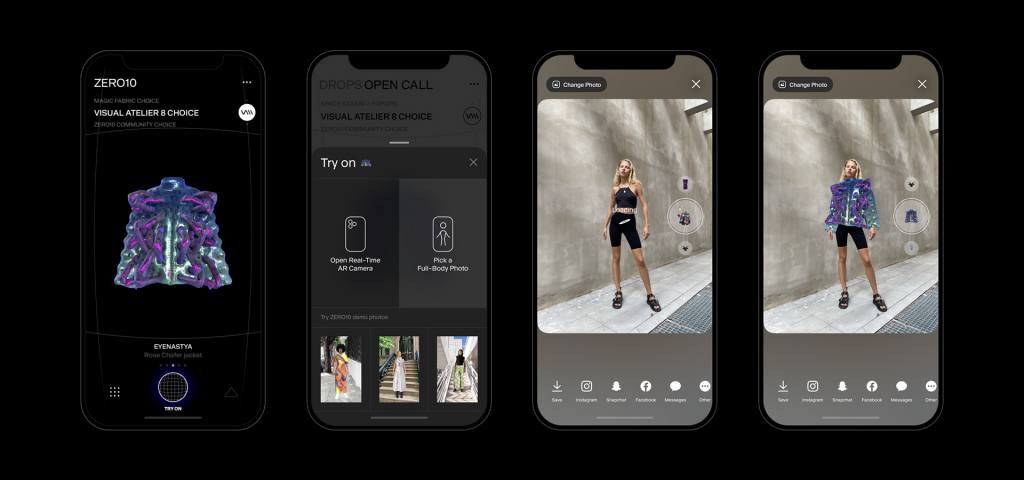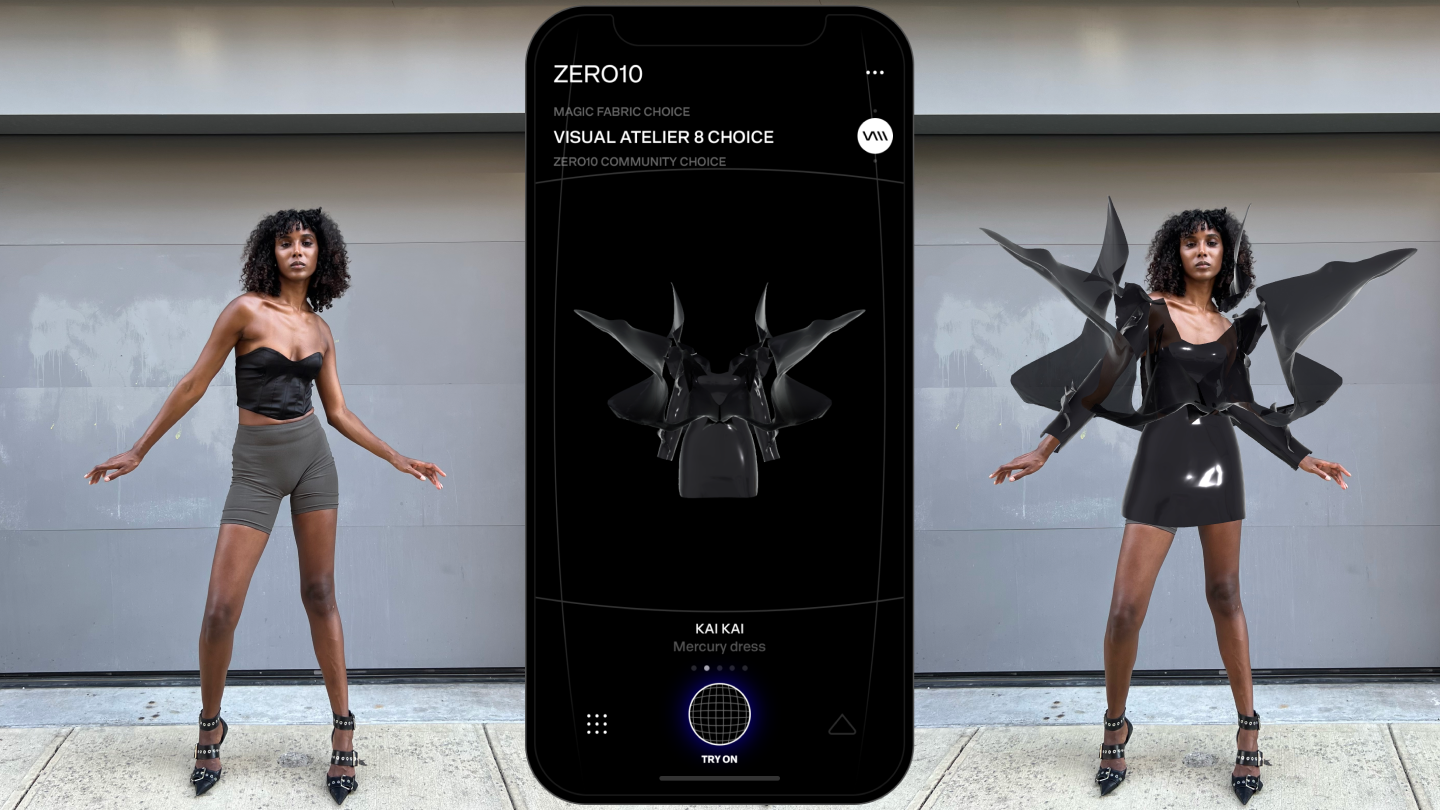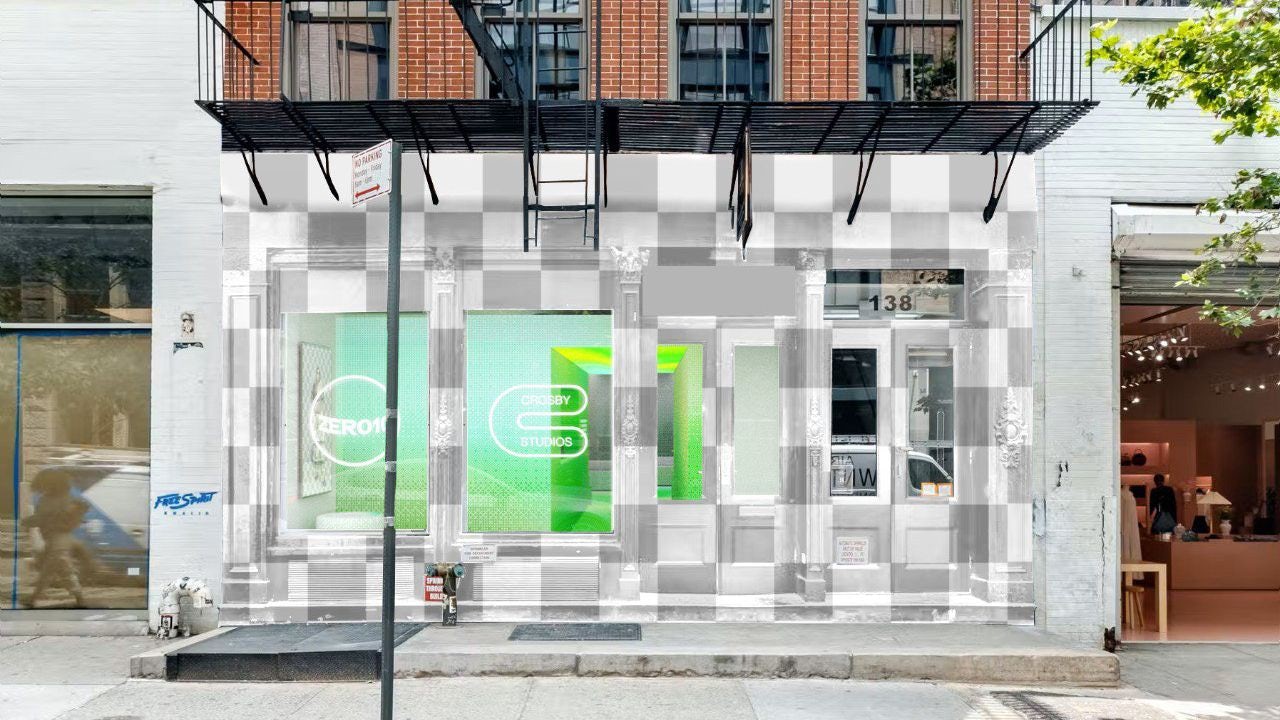What happened
ZERO10 is on a mission to break down fashion’s often elitist entry barriers. On November 21, the New York-based AR fashion platform launched a first-of-its-kind digital hub that allows brands, designers, and users to wear and publish their virtual clothing designs.
Unlike other competing apps, ZERO10’s platform is unique in that it provides the technology for users to try on, showcase, curate, and soon — design and sell their own Web3 designs. Social media company Snap, for example, has an AR function for users to wear digital garments but not a space to display them, whereas The Fabricant offers a marketplace but not a try-on experience. Even in China, Xiaohongshu’s R-space allows for people to buy, sell, and showcase blockchain-based collectibles on their profiles but does not have the built-in tools to directly create them (though brands can apply to collaborate with Xiaohongshu).
As George Yashin, CEO of ZERO10, described, “We want our platform to become the designated space for collaboration, community and connection where anyone who is passionate about design, technology, content and digital fashion has a chance to bring their ideas into the world via augmented reality.”

The Jing Take
This is not the first time ZERO10 has worked to bring virtual fashion to the mainstream. In September, the tech solutions provider unveiled what it called a “physical gateway into the metaverse,” a pop-up with no actual clothes inside. Powered by QR codes and AR capabilities, the SoHo store gave consumers a chance to discover virtual fashion in a relatively familiar brick-and-mortar environment while pushing the boundaries of traditional retail. Prior to this, ZERO10 partnered with emerging names like Estonian rapper Tommy Cash and label Maisie Wilen to host their NFTs, phygital, and virtual-only fashion creations.
Now, ZERO10 is making Web3 more accessible with its latest initiative. In addition to the fashion platform, it also plans to launch an education program for designers to learn how to convert their 3D designs into high-quality AR pieces, along with the free design tools to do so — currently, ZERO10’s in-house team helps transform designs to AR. ZERO10 AR Studio, rolling out at the beginning of next year, will not only nurture and spotlight up-and-coming talent but contribute to the expanding library of premium digital wearables.
ZERO10 wants to create “a future where fashion can truly be expressive and unique, limitless, and more sustainable,” according to its CEO Yashin. And in order to truly be limitless, providing both the resources and education needed to onboard people to Web3 will be crucial to challenging the fashion industry’s inherent exclusiveness. As consumers spend more time in the metaverse — McKinsey predicts in the next five years, Americans will spend almost four hours a day — the time for brands to try their hand is now.
The Jing Take reports on a piece of the leading news and presents our editorial team’s analysis of the key implications for the luxury industry. In the recurring column, we analyze everything from product drops and mergers to heated debate sprouting on Chinese social media.


